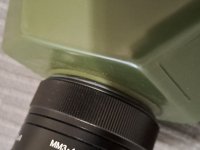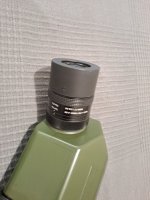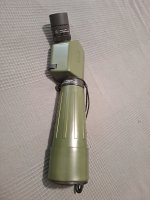Thrupenney Bit
Well-known member

Hi Gang,
Some questions from an old 'newbie' regarding telescopes, tripods and how the equipment has changed since buying my kit.
I bought a telescope and tripod ~ 30 years ago and only used it once or twice before other family commitments stopped me in my tracks, though have kept up using my binoculars when the chance arose.
I'm now helping a warden and volunteering with bird counts on a new wetland project a few miles from home.
The geography of the area means scoring birds whilst walking along a new footpath looking across the site and my x8 bins are not quite man enough so I've taken to getting the scope going, possibly for the first time!
The x20 eyepiece is great, allowing me to view across the wetland from a footpath as the warden has recommended.
My telescope is a straight Optolyth TGB80, x20 eyepiece, weighs in at about 1.8Kg and has a cover with a shoulder strap.
The tripod a Manfrotto 290 with a 200 head, ( floating? ) and a case which has a shoulder strap for carrying.
The head has a quick release plate which I've bolted onto the 'scope.
I've taken to carrying the tripod either on the shoulder or simply in my hand, with the legs fully extended.
The 'scope on my shoulder using the carry strap and snapping it into place using the quick release plate attached to the scope.
1. Am I right in thinking the current trend is in smaller and lighter telescopes?
I am seeing people using much smaller 'scopes, often attached to the tripod and carried using a backpack.
Looking online, these seem to be lighter but with smaller objective lens.
2. Are there changes optically within the newer telescopes?
A glance at -say- a new Kowa online, it seems that the larger objective lens telescopes are of a similar weight to mine.
Are the optics improved over time?
Presumably smaller objective lenses give a less bright image?
In a recent visit to my local camera shop I see the tripod head I've got seems to be fundamentally the same, just modernised.
I noticed the quick release mechanism now is lockable.
I'm enjoying using this telescope and tripod for the first times of using this kit in earnest, and it is certainly providing me with a means of accurately counting birds at a distance.
I was just wondering how it has all changed since I've been away....
cheers
Q
Some questions from an old 'newbie' regarding telescopes, tripods and how the equipment has changed since buying my kit.
I bought a telescope and tripod ~ 30 years ago and only used it once or twice before other family commitments stopped me in my tracks, though have kept up using my binoculars when the chance arose.
I'm now helping a warden and volunteering with bird counts on a new wetland project a few miles from home.
The geography of the area means scoring birds whilst walking along a new footpath looking across the site and my x8 bins are not quite man enough so I've taken to getting the scope going, possibly for the first time!
The x20 eyepiece is great, allowing me to view across the wetland from a footpath as the warden has recommended.
My telescope is a straight Optolyth TGB80, x20 eyepiece, weighs in at about 1.8Kg and has a cover with a shoulder strap.
The tripod a Manfrotto 290 with a 200 head, ( floating? ) and a case which has a shoulder strap for carrying.
The head has a quick release plate which I've bolted onto the 'scope.
I've taken to carrying the tripod either on the shoulder or simply in my hand, with the legs fully extended.
The 'scope on my shoulder using the carry strap and snapping it into place using the quick release plate attached to the scope.
1. Am I right in thinking the current trend is in smaller and lighter telescopes?
I am seeing people using much smaller 'scopes, often attached to the tripod and carried using a backpack.
Looking online, these seem to be lighter but with smaller objective lens.
2. Are there changes optically within the newer telescopes?
A glance at -say- a new Kowa online, it seems that the larger objective lens telescopes are of a similar weight to mine.
Are the optics improved over time?
Presumably smaller objective lenses give a less bright image?
In a recent visit to my local camera shop I see the tripod head I've got seems to be fundamentally the same, just modernised.
I noticed the quick release mechanism now is lockable.
I'm enjoying using this telescope and tripod for the first times of using this kit in earnest, and it is certainly providing me with a means of accurately counting birds at a distance.
I was just wondering how it has all changed since I've been away....
cheers
Q






